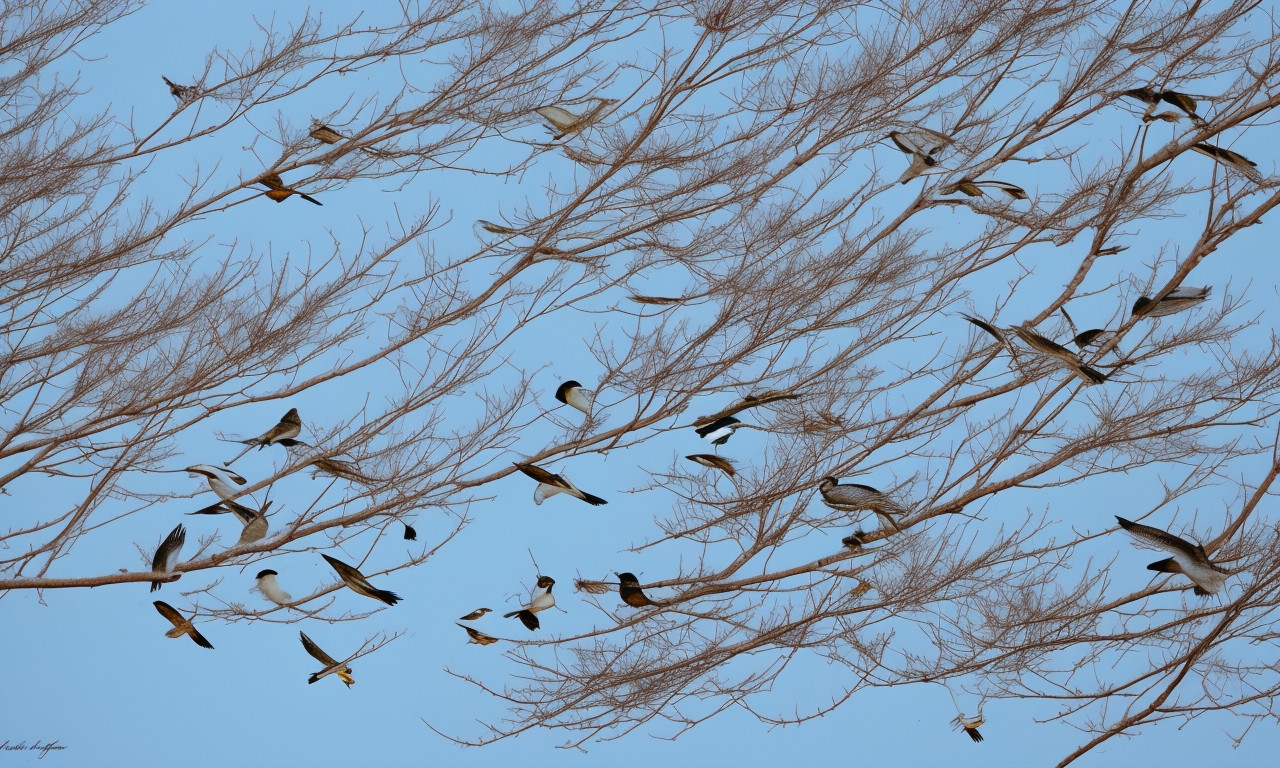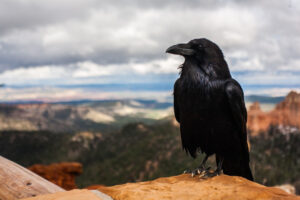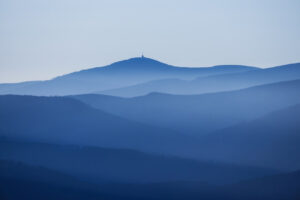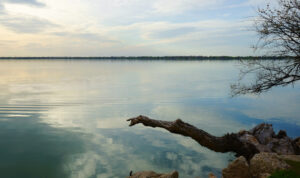As crisp, cool air sweeps across the sprawling landscapes of Iowa, a miraculous transformation takes place within its natural world. The arrival of winter is not just about shorter days and a snow-covered vista — it also marks the pilgrimage of a diverse array of birds, painting the canvas of the frostbitten environs with a breathtaking symphony of feathers and songs. Join us on a journey as we unveil the feathered wonders bracing the chill and revel in the beauty of winter birds of Iowa.
The Sky’s Migratory Ballet
Each year, a diverse cast of winged performers grace Iowa’s skies, presenting a seasonally shifting display that captivates bird enthusiasts and casual observers alike. Winter brings its own ensemble of avian visitors, each with unique behaviors and ecological niches.
The Charm of Cardinals
The Northern Cardinal stands out with its radiant red plumage, a beacon of warmth against the backdrop of white. These residents of Iowa’s winter landscape are not merely a visual delight but also a symbol of resilience, as they are well-adapted to the harsh conditions.
Related article; backyard birds of iowa
- Bold reds and soft chirps: The males are renowned for their vivid color, while females boast a subtler hue of brown with red accents.
- Sustenance amidst snow: Their diet primarily consists of seeds and fruits, making them frequent visitors to backyards with bird feeders.
The Nomadic Flocks of Snow Buntings
Another highlight of the winter season is the arrival of the Snow Bunting, a bird whose white and brown patterned feathers mirror the snowy terrain. These arctic breeders migrate to Iowa for refuge during the harshest months.
Related article; small birds of iowa
- Foraging on frozen grounds: Snow Buntings feed on seeds and grains, scavenging through the snow with a remarkable persistence.
- Flocking for warmth: They are often found in flocks, huddling together for warmth and moving with a synchronized fluidity that enchants onlookers.
The Woodland Whisperers
Traversing the silent, snowy woods of Iowa, one might encounter species of birds that seem to embody the very essence of winter’s tranquility.
Related article; andean condor birds of the world
Masters of Camouflage: The Snowy Owls
Iowa’s winter woods sometimes play host to the Snowy Owl, a majestic raptor whose ghostly presence adds an air of mystery to the stark landscape. Its white plumage, dotted with varying degrees of black markings, provides exceptional camouflage in the snow-laden terrain.
Related article; condor birds of prey
- Hunters of the silent flight: With a keen eye and silent wings, Snowy Owls prey upon rodents and other small mammals, keeping the ecosystem in balance.
The Rhythmic Drummers: Woodpeckers
A variety of woodpeckers carve their niche into the heart of winter’s domain, each sending out rhythmic drumming to communicate and establish territory.
Related article; native birds of arkansas
- Downy Woodpecker: The smallest of Iowa’s woodpeckers, it’s recognizable by its petite size and a distinctive spot of red on the males’ heads.
- Red-bellied Woodpecker: Contrary to its name, its most prominent feature is the striking red cap and nape, drawing eyes upon its mostly gray body.
The Rivers and Lakes’ Winter Choir
As the heartland’s bodies of water partially freeze over, certain bird species gather, contributing their voices to the winter chorus.
Related article; song birds of arkansas
The Majesty of Bald Eagles
Perched regally atop barren trees or soaring high above the rivers, the Bald Eagle can be observed in various locales throughout Iowa, particularly near open water or ice-free channels where they can fish.
Related article; water birds of arkansas
- Symbol of strength: Bold and undeterred by the cold, these birds of prey showcase power, commanding respect with their sheer presence.
- Communal roosts: To conserve heat and energy, Bald Eagles may roost in groups during the coldest parts of the winter.
Overwintering Waterfowls
Duck species, like the strikingly patterned Common Goldeneye and the robust Mallard, can be seen bobbing along the frigid waters, their plumage offering insulation against the chill.
Related article; backyard birds of arkansas
- Adaptations for survival: Ducks are equipped with special adaptations such as countercurrent heat exchange systems in their legs to withstand freezing temperatures.
Strategies for Winter Survival
Surviving the winter requires a suite of specialized behaviors and adaptations.
Resourceful Foraging
Birds like the Dark-eyed Junco exhibit an incredible ability to find food in a snow-covered world, often kicking the snow with their feet to uncover hidden seeds.
- Conserving energy: Birds will utilize the least amount of energy needed to secure food, optimizing their chances of survival.
The Huddling Technique
Many species, including the American Tree Sparrow, huddle together to share body warmth during the night, a social behavior critical for enduring the coldest hours.
Honoring Iowa’s Winged Winter Warriors
As we marvel at the tenacity and beauty of Iowa’s winter birds, it’s essential to acknowledge our role in preserving these species for future generations. Conservation efforts, such as creating bird-friendly spaces and supporting local natural areas, are vital.
Creating Winter Havens
Iowans can support these avian visitors by:
- Setting up bird feeders with a variety of seed types to cater to different species.
- Providing fresh water in heated birdbaths to prevent freezing.
- Planting native vegetation that offers natural food sources and shelter.
Collaborating for Conservation
Engaging in citizen science projects, like the Christmas Bird Count or the Great Backyard Bird Count, helps gather important data on winter bird populations, informing conservation strategies and sparking community involvement.
Final Thoughts
As winter embraces Iowa each year, it brings not just a chill to the air, but also a remarkable array of birds that enhance the landscape with their presence. From the charismatic Northern Cardinal to the elusive Snowy Owl, these feathered wonders possess a resilience that not only endears them to us but also inspires us to protect the natural world they inhabit. By learning about, appreciating, and taking steps to conserve our winter avian friends, we ensure that Iowa remains a welcoming place for these winged migrants and residents for many winters to come.




